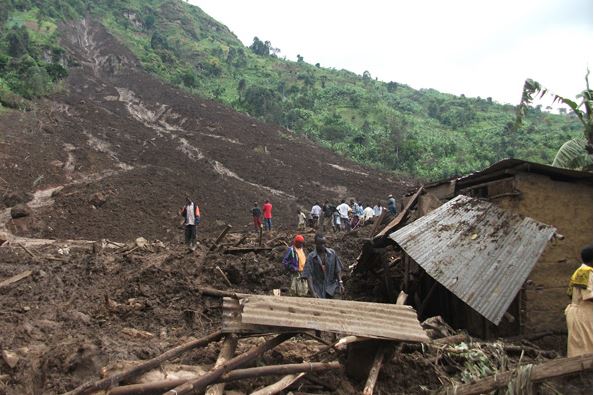12 October 2018
Bududa in Uganda: landslides kill at least 40 people
Posted by Dave Petley
Bududa in Uganda: landslides kill at least 40 people
Heavy rainfall on Thursday (11th October 2018) triggered landslides in Bududa District of Uganda, with reports suggesting that at least 40 people have been killed. Some reports suggest that the toll might be very much higher, with The Ugandan stating that up to 400 people might be missing. This includes an alarming report about the impact on a school:-
“Over 200 pupils of Shiteteyi Primary School are also missing after the mudslides swept part of their school located at Maludu trading center.”
These reports are unconfirmed as yet. The reports includes a photograph of one of the landslides (although this might be an archive image):-

One of the landslides that have killed at least 40 people in the Bududa area of Uganda in the last 24 hours. Image via The Ugandan.
.
Clearly at present the picture is far from clear; hopefully it will clarify in the next few hours. All the indications are that this will be a significant disaster.
In terms of fatalities, the Bududa area of Uganda might be the most disaster prone in Africa. I have previously posted about significant landslides there in 2011, with at least 50 fatalities; and 2012, with about 90 fatalities. There is a report on Wikipedia about a large failure in March 2010, with about 100 deaths.
The area affected by these landslides is the flank of Mount Elgon, an extinct shield volcano that reaches an elevation of over 3000 metres. The flanks of the volcano are deeply weathered to laterite, and the area is affected by heavy rainfall events, with an annual total of over 1,800 mm. Humans have heavily modified the landscape, with widespread deforestation in the last 25 years. This has involved increasing cultivation of the steeper slopes higher up the volcano. The underlying cause has been a shortage of land in more suitable areas due to population pressures. Land is now being farmed that, without natural vegetation, is inherently unstable.
The image above illustrates these problems perfectly.
Interesting, the Kenyan side of the volcano is not subject to the same level of landsliding. Kenya declared this area to be a national park in 1968, and this area was declared as a Biosphere Reserve by UNESCO in 2003.


 Dave Petley is the Vice-Chancellor of the University of Hull in the United Kingdom. His blog provides commentary and analysis of landslide events occurring worldwide, including the landslides themselves, latest research, and conferences and meetings.
Dave Petley is the Vice-Chancellor of the University of Hull in the United Kingdom. His blog provides commentary and analysis of landslide events occurring worldwide, including the landslides themselves, latest research, and conferences and meetings.
In UK, we remember the Aberfan disaster, when heavy rain raised the water table, fed a spring beneath an unstable colliery spoil tip, and the ensuing slip swallowed the village school…
:-((
Because they exploite the land and take away All the trend. Ser what they did to the national Park in order to have some Chinese investnents. Not the last time this Will happen in Uganda.